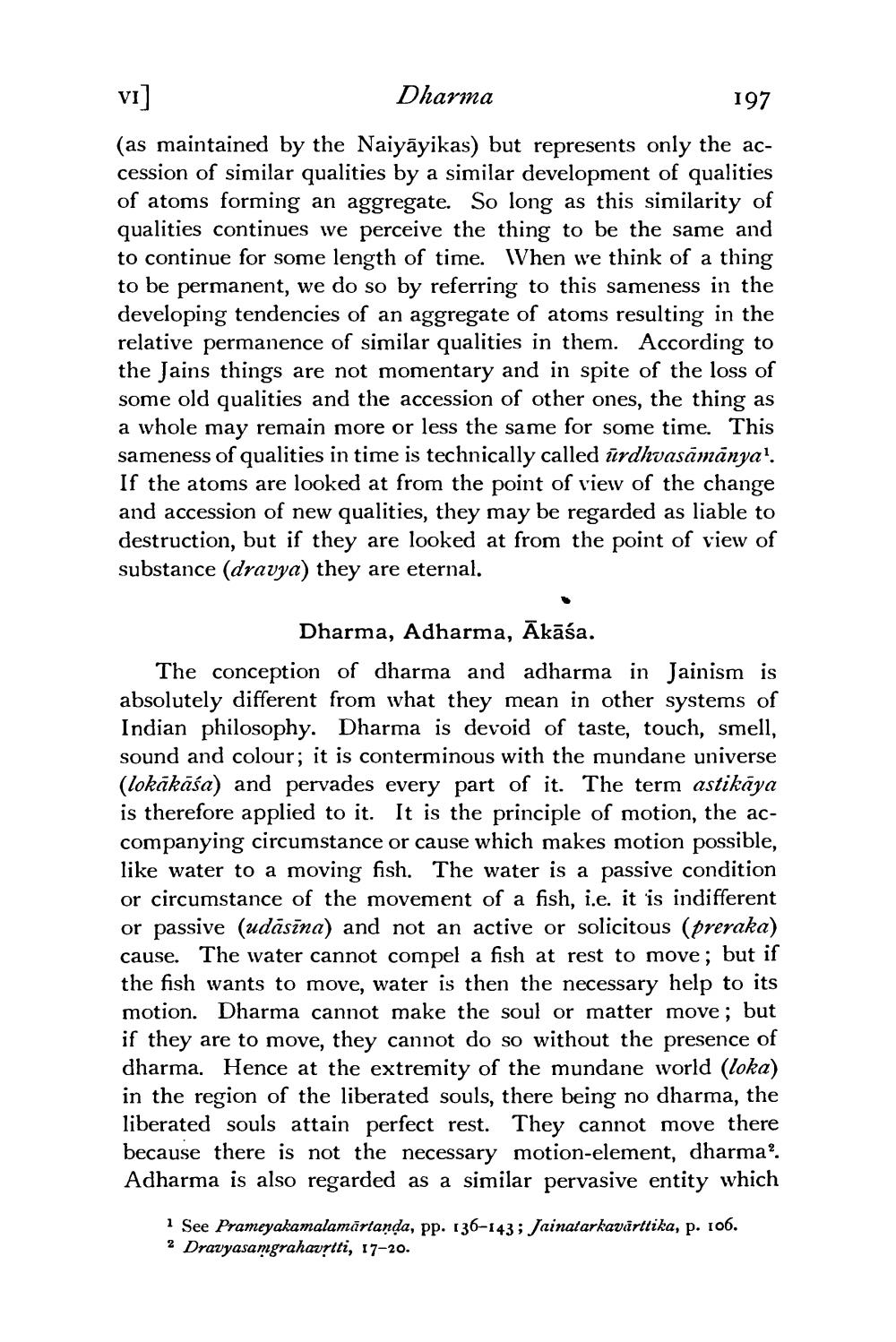________________
VI]
197
(as maintained by the Naiyayikas) but represents only the accession of similar qualities by a similar development of qualities of atoms forming an aggregate. So long as this similarity of qualities continues we perceive the thing to be the same and to continue for some length of time. When we think of a thing to be permanent, we do so by referring to this sameness in the developing tendencies of an aggregate of atoms resulting in the relative permanence of similar qualities in them. According to the Jains things are not momentary and in spite of the loss of some old qualities and the accession of other ones, the thing as a whole may remain more or less the same for some time. This sameness of qualities in time is technically called urdhvasämanya1. If the atoms are looked at from the point of view of the change and accession of new qualities, they may be regarded as liable to destruction, but if they are looked at from the point of view of substance (dravya) they are eternal.
Dharma
Dharma, Adharma, Ākāśa.
The conception of dharma and adharma in Jainism is absolutely different from what they mean in other systems of Indian philosophy. Dharma is devoid of taste, touch, smell, sound and colour; it is conterminous with the mundane universe (lokākāśa) and pervades every part of it. The term astikāya is therefore applied to it. It is the principle of motion, the accompanying circumstance or cause which makes motion possible, like water to a moving fish. The water is a passive condition or circumstance of the movement of a fish, i.e. it is indifferent or passive (udāsīna) and not an active or solicitous (preraka) cause. The water cannot compel a fish at rest to move; but if the fish wants to move, water is then the necessary help to its motion. Dharma cannot make the soul or matter move; but if they are to move, they cannot do so without the presence of dharma. Hence at the extremity of the mundane world (loka) in the region of the liberated souls, there being no dharma, the liberated souls attain perfect rest. They cannot move there because there is not the necessary motion-element, dharma2. Adharma is also regarded as a similar pervasive entity which
1 See Prameyakamalamārtaṇḍa, pp. 136–143; Jainatarkavārttika, p. 106. 2 Dravyasamgrahavṛtti, 17-20.




